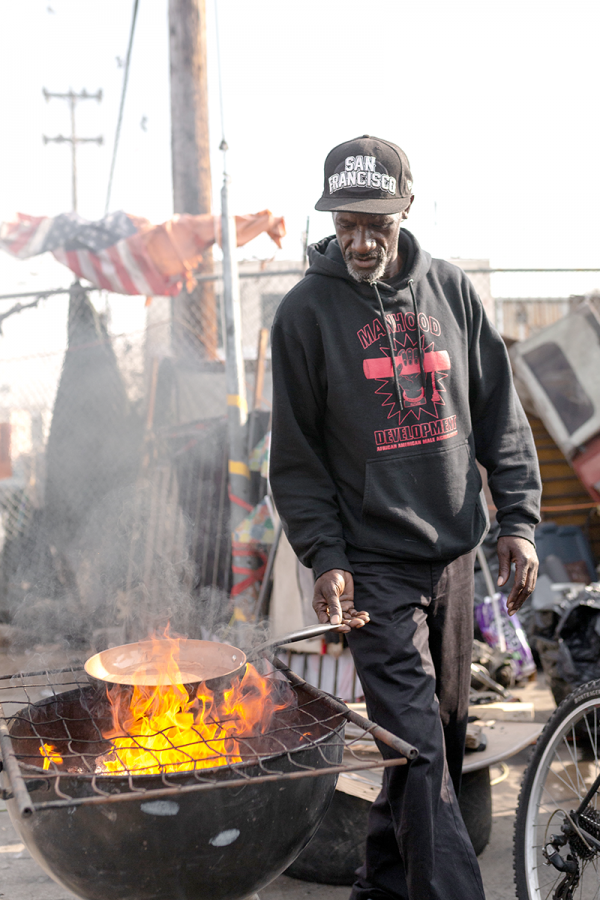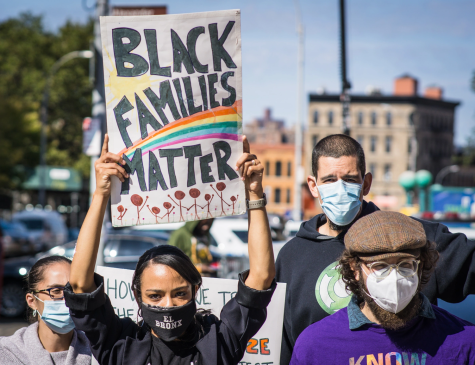Homelessness, is there really a solution?
November 14, 2019
Homelessness is a constantly growing epidemic that has been spreading throughout the San Francisco Bay Area. This issue is growing due to factors like increases in the cost of living and a lack of high paying jobs. The total population of homeless people is now over 28,000 as of 2017, according to the Bay Area Homelessness Report. This has made the Bay Area contain the third largest homeless demographic in the country, according to Fox News. With all of these factors contributing to the issue, it raises the question, what is the solution to reduce or stop the problem of homelessness?
“The social safety net is gone… there will never be a permanent solution to homelessness, there will always be people that do not meet the societal standards, making it difficult for them to be functional members of society,” Bill Eason, the owner of Eason Auto Works in Oakland, said in an interview.
As a resident in West Oakland since 1989 and a business and home owner for over 18 years, Eason explained how the issue of homelessness has affected his business. He said some customers have been scared to come to him due to a homeless encampment being established right outside the doors of his shop.
Eason suggested the media depiction of homeless people tends to underplay the issue’s severity … “rather than focusing on the statistics and stating that homeless people need just need a place to live to fix all their problems.”
“The media needs to explain the real issues like drug abuse and psychological issues that hold them back from turning their life around,” he said.
Jonathan Russell, Vice President of Programs at the Bay Area Rescue Mission in Richmond, provides people with resources that will allow them to get back on their feet. He does this through a variety of programs and services offered by the Bay Area Rescue Mission. These programs include faith-based services, life management skills, education programs, and job placement in their kitchen.
“There is no silver bullet to eliminate the problem of homelessness across the board because homelessness is a systemic issue, it’s an issue that involves a whole system of living,” Russell said.
Russell explained that this system of living is made up of different components including housing, income, mental health, a support system, and a connection to a community that provides people with resources.
One of the potential solutions that have been established by the City of Oakland to help reduce the number of homeless people on the street is the introduction of Tuff Sheds, a brand name for custom structures that can be erected quickly and modified for various uses. Tuff Sheds are a form of “transitional housing” which will allow homeless people to get back on their feet, and the first Tuff Shed encampments were established in 2019, according to KTVU.
“Tuff Sheds are not the solution. Rather, they only create more issues,” according to Mayvin Carter Griffin, a former artist and teacher who has been homeless for more than five years.
The issues she addressed were focused around the freedom that is taken away from individuals who live in Tuff Sheds.
Mayvin, who currently resides at the Wood Street encampment in Oakland explained that the goal of establishing Tuff Sheds is to take down encampments that are established by homeless individuals, like the Wood Street encampment.
Griffin explained that with no place to go, and after an incident of being attacked while she was sleeping, she and a few people she had met while being homeless decided to build a community where they could help each other survive. The encampment now houses over 50 residents and according to Griffin, they have turned the empty lot into a functional community where everybody contributes.
“Our community is actually very similar to the campgrounds at Burning Man, we take advantage of any resource we can get our hands on,” Griffin stated.
The city of Oakland has made many attempts to bring down the encampment, including through eviction attempts. Griffin explained that the residents are in constant fear and are unsure of what the next day will bring them.
“We are fighting for our right to live here, the city has been trying to evict us for months now,” she said.
With Tuff Sheds and housing organized by outsiders comes a set of rules that ultimately take away the freedom of residents.
“Staying at a Tuff Shed encampment is the same as being in prison… how are we supposed to get back on our feet with so many rules?” Griffin said.
She is also concerned about the capacity of these Tuff Shed encampments, claiming that they could only house 40 people per encampment, which she believes is to low of a number to make a big impact on the issue of homelessness.
Eason dislikes the idea of a Tuff Shed Program as well.
“The living conditions are inhumane. They are missing the key aspect of modern living… plumbing,” Eason said.
Russell understands that regardless of their living situation, homeless individuals are still in need of resources and community alongside housing.
“Solving homelessness is more than giving people a place to stay, it’s providing them with the resources and support system that they need in order to sustain their lives,” Russell said.
Russell backs support services like Tuff Sheds, but believes that they are only a temporary fix. He states that the biggest misconception is that people believe once a homeless person is given a place to live, all their problems will disappear.
“There tends to be this out of sight out of mind mentality when it comes to homelessness, people just want them to be housed and then move on. Housing is only the first step, they need to be a part of a community and be given the proper resources and support so that they can overcome their internal issues and get back on their feet,” he added.
That is where organizations like the Bay Area Crisis Rescue Mission come into play. The purpose of their programs is not to just give homeless people a temporary place to stay, but instead, to allow for the residents to gain skill sets and have a support system that allows for them to get back into the working world.
















